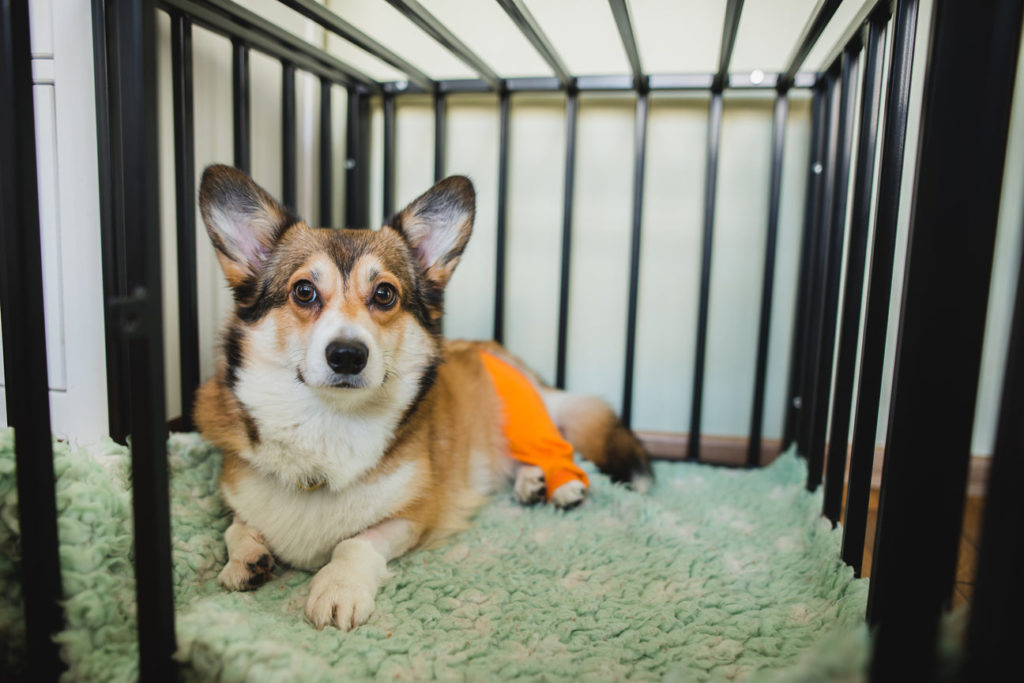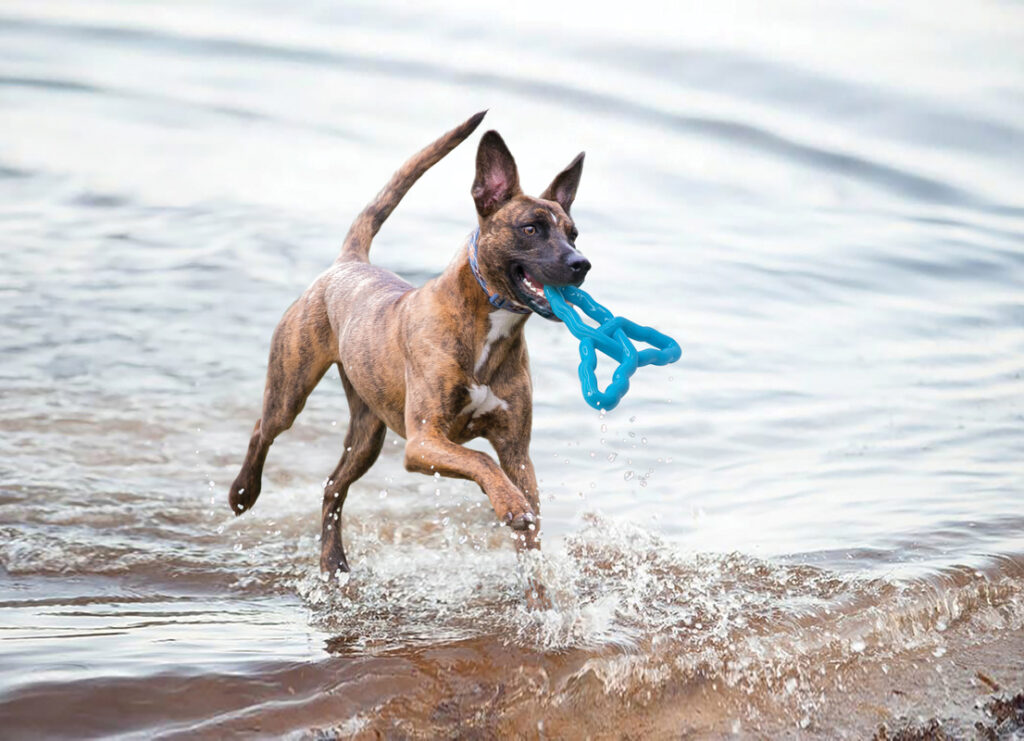What’s the deal with dog crates? Why does everyone recommend them?
Dog crates are an easy and effective way to keep your dog confined while you are training them. For their own safety – and your sanity – dogs in training need to be confined or supervised at all times.
Crate Training When Not Home:
Chewing your furniture or belongings is frustrating for you, but it may also land your dog in the emergency room or worse. An ingested sock can easily cause an intestinal obstruction. So keeping your dog confined when you can’t be watching him, is the kindest thing you can do for him.
Crate Training While Potty Training:
When potty training your dog, it is crucial to keep them confined to prevent them from peeing inside your house. The biggest mistake new puppy and rescue dog parents make, is to give them too much freedom too soon. Much like a human child, they should only be given more privileges when they earn them and prove they are ready.
What not to do while crate training:
But it is easy to misuse a crate. Crates should not be used as a punishment, but rather as your dog’s “special place”. A dog’s crate should only be associated with positive experiences. Look at your dog’s crate not as a “cage” but as their den. Or better yet, think of it as their “man cave” or “she shed”. Their crate should be a fun, safe-haven for them.
Dogs are naturally den animals. They thrive on the comfort and security that a small enclosure provides. However, dens do not have doors. So only 1 out of 10 or 15 times that he goes in his crate do you actually shut the door on him, while training.
Crate training your dog – the right way.
Whether you are crate training a new puppy, rescue, or adult dog, these are the steps that work. But they depend on your consistency. So don’t overthink it. Have fun and make a game of it.
Everything good comes in the crate.
Feed your dog’s meals in the crate – preferably stuffed in a KONG toy. By ditching a feeding bowl for a KONG Classic or two, you are keeping your dog engaged longer and teaching him to love to play with his KONG. So even when it doesn’t have any food in it, he will still play with it.
The crate game.
Randomly run your dog to his crate and reward him with lots of praise and a treat, handful of kibble or a special toy when they run into it. Leave the door open and let him enjoy the reward in his crate. If you do shut the door, make sure to give him a KONG stuffed with yummy food. So you are redirecting and rewarding him for going into and hanging out in his crate.
Put it on cue.
Teach your dog to go to his crate on command. Put a word to it. Say “go to crate” or “go to your bed” or “crate time” and then toss a treat into the crate. As your dog runs to it, cheer him on with lots of praise and encouragement. Again, more often than not, your dog is able to grab the treat and then leave the crate. If you always shut him in, he will learn very quickly not to go in at all.
Build up to confinement.
After you’ve laid the groundwork teaching your dog that the crate is a positive thing, then you can start to confine him in it. When you do have to leave your dog in the crate, always leave him with something special that he only gets when confined. A KONG Classic stuffed with his dinner and some extra special treats work well. Bonus – freeze the KONG to keep him busier even longer.
This will reward him for being confined and keep him redirected and not thinking about the confinement. Instead of you giving out lots of treats – make the KONG do it. Always work smart, not hard.
Crate Training Conclusion:
Dog crates are such a great way keep your dog safe while you train them. A crated dog is not stealing socks, peeing in your closet or digging in the trash. It prevents the bad habits so you can replace them with good habits.
You don’t always have to use the crate. It’s like training wheels for your dog. Once your dog is trained and trustworthy, and you don’t need to confine him anymore, you can take the door off the crate altogether. The crate remains your dog’s special place, but now he can truly come and go as he wants.
___________________________________________________________
By Cindy Scott, Master Certified Trainer DOGS ETC. thedogsetc.com



